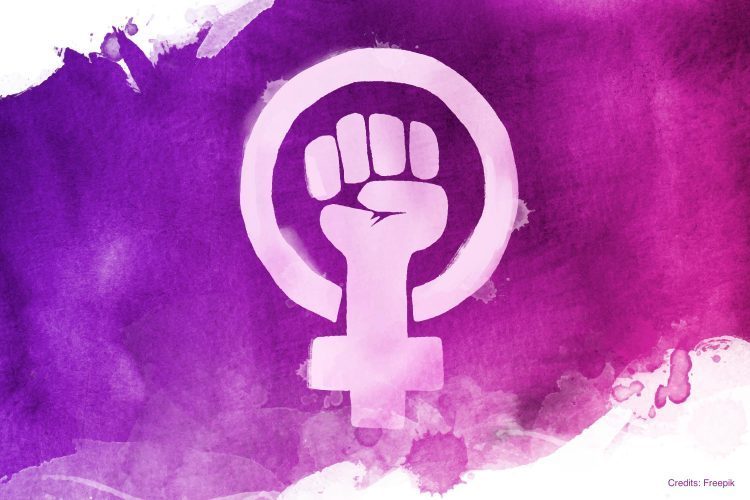By Susana Chiarotti, Sandra Berthelot-Aranda and Annabelle Moreau Santos, experts from the EUROsociAL+ Gender Area

Foto: Art Tower
“Nobody stops us here. When there is a need to get out ahead, we hit the road.“ With these words, Linda Poole, Former Executive Secretary of the Inter-American Commission of Women (CIM-OEA in its Spanish acronym) who died on 28 October 2020 in Panama, showed her strong commitment to preventing, punishing and eradicating gender violence.
In the midst of the Covid-19 pandemic that devastated the world and affected women in a differentiated way, the webinar “Resonating in Time. Foundations and Steps to Take to Live without Violence in Latin America” paid homage to Linda Poole. This event, held on 25 November 2020, was organised by the Inter-American Refuge Network (RIRE) together with Eurosocial+, a programme funded by the European Union and coordinated by FIIAPP (leader),Expertise France and IILA.
In addition to paying tribute to one of the “heirs to the suffrage movement” who contributed to changing a social paradigm through a legal instrument, this webinar was also an occasion to present the Regional Study on Refuges for Victims of Gender Violence in Latin America in which the refuges are mapped out in 16 countries in Latin America and the Spanish-speaking Caribbean. In Europe, this mapping work has essentially been carried out by Women against Violence Europe (WAVE), the main network tasked with mapping support services such as hotlines, women’s refuges and hostels for survivors of violence. In one of its recent reports (2018), WAVE concluded that only five European Union member states met the minimum standards established by the Istanbul Convention regarding the capacity of beds in reception centres for women.
Therefore, both regions – Latin America and Europe – face a common challenge: the need, especially in times of pandemic and in the face of worsening gender-based violence, to strengthen care services for the women and girls who are victims of violence.
Linda Poole, pioneer of a “living instrument”: the Belém Do Pará Convention
During the webinar, Georgina Leiro, one of the original drafters of the Belem do Pará convention, recalled that Linda Poole promoted the idea of having a convention on violence against women. As executive secretary of the CIM between 1986 and 1996, Linda promoted the creation of a technical working group to draft this legislative text, and thus generate international standards capable of compelling the Latin American and Caribbean states to react in the face of gender inequalities. For 5 years, Linda advocated for its approval.
After 32 amendments, it was finally signed in June 1994[1] by 34 OAS member states. One of the pillars of this convention is the advocacy and defence of the right of women “to be valued and free from stereotyped patterns, behaviours and social and cultural practices based on concepts based on inferiority and subordination”, as mentioned during the webinar by Alejandra Mora Mora, the current CIM executive director. Over the years, the Convention has generated transformations in the region such as the reform of judicial systems or the implementation of public policies with a gender perspective. But this text, the only regional mandate regarding violence against women in the world, has also become an inspiring legal instrument in Europe. Today, Linda Poole continues to be recognised as the intellectual author of the Belém do Pará Convention, a text that will not cease to resonate over time and be an invaluable guide to action in this area.
Refuge Service Realities: a right to protection and support
The webinar witnessed the presentation of the Regional Study on Refuges for Victims of Gender-Based Violence in Latin America. This mapping is part of a joint project between the MESECVI (Follow-up Mechanism of the Inter-American Convention to Prevent, Punish and Eradicate Violence against Women) and the EUROsociAL+ Gender Equality Area, which seeks to contribute to preventing violence against women and girls. The methodological proposal included a questionnaire that was sent to all national authorities in charge of the issue of violence against women. The high level of responses enabled up-to-date official information to be gathered on the refuges.
Refuges are structured around four basic principles: they are free, confidential, accessible and feminist in nature. A stay by the women victims of violence and their children includes several stages (from admission to discharge) so that they can recover from the violence suffered, regain self-confidence and move towards an independent life.
Among the findings of the diagnosis, the following trends regarding refuges in the Latin American region were revealed:
1. Increased number of refuges
If in the 90s the number of refuges was very low in Latin America, in the following decades, and especially during the new century, this number has been steadily increasing. For example, in Chile, which last century did not have any refuges, saw, in 2007, the creation of 43 refuges for cases of violence and 1 specialised hostel for victims of trafficking. Argentina went from having about twenty to having 167; Bolivia, as of 2004 reported that it had 23 refuges. Peru, for its part, went from having 1 in 1999 to 34 refuges today. At the moment, in the 16 countries surveyed alone, there are 568 refuges.
2. Legislative standardisation
The existing anomalous situation of the early 1990s was gradually replaced by national laws, action plans, national and provincial programmes that included refuges within public policies. The management of refuges, which initially had minimal rules and was carried out on a voluntary basis, was gradually replaced by designed management models and the creation of protocols and action guides that regulate the reception of women who have suffered violence and the development of the services they are offered.
3. Progressive consideration of the matter of refuges by the state
The first refuges were created mostly by women’s groups and their work was inspired by feminist solidarity. The idea was to guarantee the life and physical integrity of women who suffered violence. This initiative stemming from organised civil society was made visible by women’s movements that placed this problem on the public agenda. Therefore, progressively, institutional devices were created to guide the civil service in the exercise of their tasks. In most countries, the municipal level of the state apparatus takes charge of the refuges, it is this level that takes on the budgetary support of these units.
This development, or in other words, the fact that national governments have increasingly supported refugee services for women, was fostered by the approval of the Belém do Pará Convention, which marked a turning point from which the feminist maxim “the private is political” or “the personal is public” began to take effect. Despite this, it should be noted that, if states began to recognise the need to maintain refuges and encourage their installation (in Mexico it was legitimised in the General Law on Women’s Access to a Violence-Free Life, LGAMVLV in its Spanish acronym), nowadays governments are scrambling for funds and do not hesitate to resort to budget cuts. For example, in May 2020, in the midst of an austerity campaign to confront the pandemic, the Mexican government announced that funds would be cut for advisory centres for indigenous women (30 houses for indigenous women that each received between 25,000 and 40,000 dollars annually), coinciding with an increase in reports of domestic violence during confinement. [2] An alarming decision considering that in Mexico, as in other Latin American countries, the main source of support for these refuges is the state [3]:
4. Identification of specific budget items
Little by little, the states made progress in identifying specific budget items for refuges, which allows us to measure the state’s effort to guarantee the safety of victims. Eleven out of sixteen countries gave data on their budgets. Others bundle the sum total within the budget for their gender equality bodies, whether they are ministries, secretariats or institutes.
5. Budget reduction during the Covid-19 pandemic
In Honduras many of the refuges are under pressure to respond to growing demand. [4] In Cuenca (Ecuador), the refuge for survivors of gender-based violence is at full capacity. The health crisis has exacerbated violence against women due to their confinement in homes, the closure of schools, the overload of care tasks, and several countries reduced the budget allocations they had allocated to refuges, in some cases drastically.
Conclusion and perspectives
Latin American governments, especially since the approval of the Belém do Pará Convention, have paid greater attention to gender inequality on political agendas. Despite growing government commitments to eliminate gender-based violence and the increase in the number of refuges in the last decade; in times of health emergencies, the road to achieving care services for women victims of violence is still long. In more and more countries in this region, there is not adequate coverage to ensure refuge services. And in those that have more resources, they are saturated.
This phenomenon is also repeated in the old continent, where the European Parliament in the centre of Brussels was faced with the need, in May 2020, to reassign one of its offices as a temporary refuge for homeless women or victims of domestic violence, especially affected by the pandemic.[5]
Within this framework and with the objective of increasing the number of refuges, during the webinar, three recommendations were made to states:
- Allocate necessary funds to these services;
- As well as taking measures so that they are strengthened and remain enabled, active and prepared to receive women in need.
- After verifying that few countries evaluate public policies on refuges, and their operation, it was also recommended systematic monitoring be carried out, identifying the difficulties encountered and the achievements obtained.
In this sense, the study [6] is a valuable input since it has made it possible to draw a baseline from which to identify the number of refuges in the region, their coverage area, the type of services they provide and the state mechanisms for their supervision. Therefore, in the recovery phase and as part of crisis management, it will be essential to invest in civil society initiatives for the prevention and elimination of gender-based violence; design programmes that enable women to gain economic autonomy that include plans for access to housing, job training, financial support and access to employment. Thus, the pandemic has enabled the revaluation of care tasks, highlighting the role of shelters and refuges that support victims.
It is necessary to unite these efforts with permanent tasks aimed at violence prevention and the transformation of discriminatory culture!



